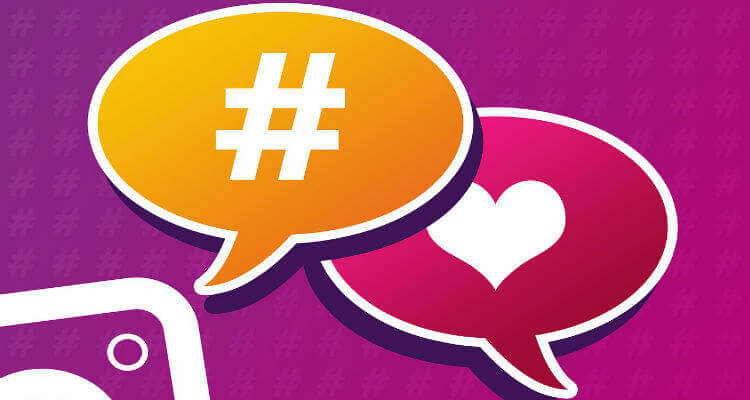Why the Sex Tech Community Should Stop Using Hashtags
Social media crackdowns and the unfair targeting of sex-positive and marginalized folks.

The era of people—especially in communities where gender, sex, and sexuality are defining factors—connecting online, often via hashtags, is in peril.
However, in working within, but without the oddly conflated socio-commercial marketplace of goods, ideas, and humankind that the Internet has evolved into, there is potential for a future wherein the twin terrors of shadowbanning and outright profile removal could be of remarkably less concern.
In specifically thinking about the evolution of the Internet as a place where Twitter, Facebook, and Instagram solely existed as points of social engagement to marketplaces where people’s social engagement has commodifiable worth, the immediate need for people to grow past a hashtag as their community’s best identifying factor, is important.
Hashtags: The past, present, and future
The journey of hashtags from metadata necessity to the clarion call to activists and organizers worldwide has been an astounding decade-long expedition.
Hashtags traverse both liberal and conservative sensibilities, and all industries and interests.
It’s impressive to realize that what began on Twitter in 2007 by Chris Messina as a way to organize groups—and allegedly derided by Twitter as “a thing for nerds”—are now used an average of 125 million times a day, and have spread to Facebook, and Facebook’s property Instagram, too.
However, in Internet years, a decade is quite some time. Now may be the moment to look past the hashtag and into less say, “trackable” ways to create communities online, especially maligned movements related to gender, sex, and sexuality.
The idea that the origin of hashtags are as old as the Internet itself is both tremendous and problematic as it relates to their future as a way to galvanize community development.
We are living in an age where, because people are so tied to screens and devices, digital culture’s commercial worth is as or more important than the worth of real-time interaction.
Thus, there is a need to streamline and regulate the most popular of these new marketplaces. Hashtags existing as long as the Internet has been in existence allows for them to be the most easy-to-use way to calculate use and engagement both between people and with products.
The algorithms that Instagram uses target hashtags for length of viewing, plus speed and level of engagement on posts using a specific hashtag. Thus, unfortunately, for those looking to attach their sociopolitical and brand-based agendas to their marketing goals and financial bottom line, hashtags create easy-to-find targets for disdain and segregation.
When regulation goes too far

Recently, protestors have begun to publicly demonstrate against Facebook and Instagram policies regarding posts featuring nudity.
For example, in coalition with the National Coalition Against Censorship (NCAC), artist Spencer Tunick organized the #WeTheNipple campaign to highlight how gender inequality affects how media is regulated on Facebook and Instagram.
Tunick and the NCAC’s argument centers on the idea that people of color, women, people who are non-binary or gender non-conforming, members of the LGBTQIA community, and sex workers who use social media sites to promote their work (including pornography, full-service, and webcam shows), are unfairly targeted, oftentimes having their posts “shadowbanned,” or their profiles outright removed.
Moreover, Facebook and Instagram have been, via campaigns like these, demonized for their policy of demoting content that it deems less appropriate for the site, which does not directly violate their current content policies.
New York City-based dominatrix Mistress Maddox notes, “As much as it is about the type of content being flagged, it’s much more about the type of user using a hashtag that is being targeted by Instagram’s algorithms. It appears that they are unfairly and unjustly targeting people of color and those in the plus-size community, plus sex educators, too.
Why, exactly, is this happening?
While segregation and disdain of people for their gender, sexuality, and sexual behavior is easy to debate as improper, it is important to note the following from Investopedia, too:
Instagram makes its money from advertising, just like Facebook. Facebook doesn’t break out Instagram’s financials, but 98% of all Facebook revenue came from advertising in 2017. That number stood at 97% for 2016 and 95% for the year before, according to the company’s annual reports.
Even further, in the same Investopedia report, Instagram’s mobile user growth of 1200% in under a decade is noted as well. However, in the face of all of this development, Instagram’s net yearly revenue worth to Facebook is only a hair under $2 billion a year.
Given that Facebook is a publicly-traded company with investors, overall is hovering near $150 billion in net worth, and lost value in 2018, the need for an obviously valuable property like Instagram to become MORE profitable becomes highly important.
As of July 2018, four of Instagram’s top ten hashtags were #beautiful, #cute, #love, and #me. These tags are oftentimes equated to photography and products that are aligned with conventionally attractive, in all definitions of the term, people, places, products, and movements.
Thus, because of the fact that numbers and data don’t necessarily lie, it would behoove a company to align their bottom line with things of known and demonstrable value.
Related, banning or even just hiding people, places, products, and movements that are not related to hashtags that can drive net revenue to a place that balances for Facebook’s recent revenue losses is a logical plan. Sadly, in this case, a demand for profit likely trumps what many may refer to as “the social good.”
If we’re all using social media more than ever, but hashtags have evolved past their initial use for allowing us to create sustainable communities online, how then do we engage in the development of social organizing features in the now ever-important digital realm?
It may be time to contemplate the need to more significantly engage in word of mouth campaigning as the latest and simplest way to engage past the marginalized lowest common denominator hashtag.
Hashtags have succeeded in allowing for a “caste system” of sorts to develop wherein people, especially in the realms of gender, sex, and sexuality, are highlighted as important cultural curators. Now, it is likely imperative for these curators to, out of necessity more than anything else, create safe and evolved communities.
On Twitter, the hashtag #FollowFriday long existed as a way for people to highlight and suggest other important people with whom to follow and engage as fellow curators of online communities.
Maybe, without the use of hashtags, it could be time for more significant tagging, highlighting, and showcasing, by those deemed important, via daily intra-communitarian conversation and approval. Thus, this is a conversation that emerges as untrackable, yet worthwhile to Facebook and Instagram’s space as a purveyor—because it is undeniably a part of our shared humanity—of human social good.
Or, as Mistress Maddox bluntly states, “Let us be hoes and gay and fat and naked and teach people. Gah.”
Image Source: Aristeo Castillo, Alexander Bahena
Leave a reply
You must be logged in to post a comment.

















